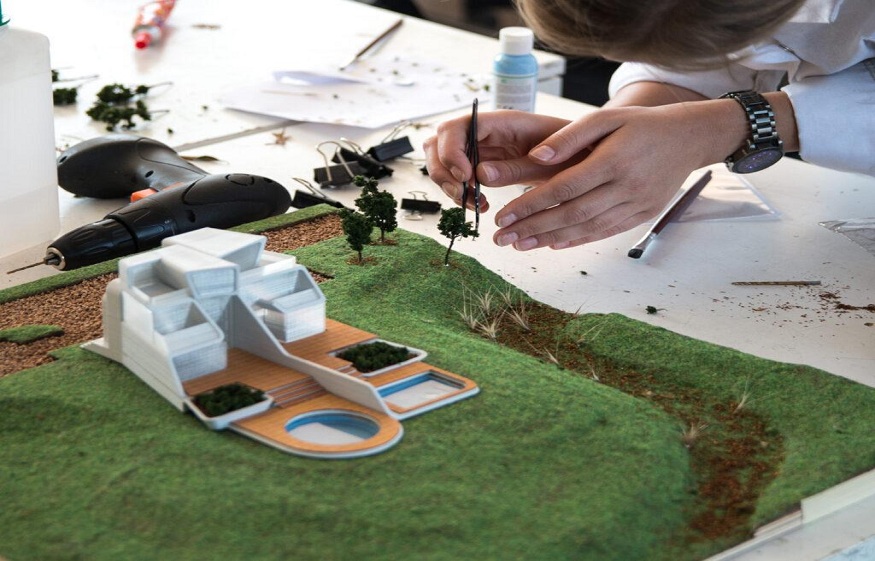The ground is shifting in the architectural show when additive manufacturing as technology or 3D printing, is starting to be incorporated. This creative approach to building and design is changing what architects think about, create, and carry out. Today, the field has presented previously unheard-of opportunities for architects to innovate while tackling real-world problems that have, until now, limited the field.
More Expression of Creativity and Flexibility in Design
However, for an architect, traditional construction methods often limit the innovation of the architect because of limitations of the industrial and structural limitations. 3D printing for architects eradicates many of these obstacles and allows the design of intricate geometries that are incredibly expensive or quite frankly, impossible to do via conventional means. Theoretical ideas are translated into realizable parametric shapes, organic curves, and intricate lattice structures.
With this technology, unique building components with different densities, textures, and characteristics can be produced in a single print session. Architects can now create facades that react to climatic circumstances through their geometric qualities, walls with built-in ventilation systems, or decorative components that have structural functions. New possibilities for architectural expression are created by the ability to play with shape without being limited by conventional manufacturing techniques.
Rapid Design Validation and Prototyping
Modern architects have a big advantage in being able to swiftly create physical models at different scales. Rapid iteration and concept testing made possible by 3D printing revolutionizes the design creation process. Complex architectural models may additionally now be created in a count of hours or days, whilst in the past they took weeks to make.
Economic Efficiency and Cost Savings
The cost benefits of 3D printing technology for architectural projects are substantial. Traditional construction frequently generates a lot of waste because of material scraps, shipping broken items, and placing excessive orders to cover any losses. With additive manufacturing, waste, and related expenses are drastically reduced because just the material required for the finished product is used.
Saving money can also be achieved by doing away with the complicated formwork and temporary buildings needed for conventional concrete construction. 3D printing technology makes it possible to directly create custom architectural parts that formerly required costly molds or specialist skills. By eliminating intermediary phases, production is streamlined and project expenses are decreased overall.
The fact that 3D printing eliminates the need for highly skilled artisans to create intricate geometric shapes also lowers labor expenses. The total labor requirements for creating complex architectural pieces are far lower than with traditional methods, even if trained operators are required for the printing process.
Sustainable Building Methods
Optimization of material distribution also increases energy efficiency. In order to improve thermal performance, 3D-printed walls can include air gaps and insulation patterns without the need for extra materials or assembly procedures. Structures that use less energy and have less operating environmental effects can result from this integrated approach to building efficiency.
Accuracy and Uniformity of Quality
The remarkable accuracy and consistency that 3D printing technology offers outperforms conventional building techniques. Human error is eliminated and uniform quality is guaranteed across a variety of components through computer-controlled production procedures. Complex architectural features that need precise tolerances for correct fit and function will benefit greatly from this accuracy.
Due to the digital nature of 3D printing, designs may be precisely duplicated numerous times, guaranteeing consistency for large-scale projects or as replacement components become necessary. Particularly for architectural components that have to fulfill particular performance or aesthetic requirements, this dependability is crucial.
Each printed component may be examined and checked before installation, making quality control easier to handle. Rapid identification and reprinting of defective pieces helps to prevent expensive delays and rework that are frequently associated with older construction processes.
Adaptability and Individualization
In place of standardized designs, modern architectural clients are calling for more distinctive, customized solutions. With 3D printing, you may create personalized components without incurring the expenses that come with one-off production. The efficiency of production may be maintained while customizing each printed component to meet particular needs.
Beyond cosmetic reasons, this customization capacity allows for useful adjustments. Building components can be tailored to meet user wants, climate constraints, or particular site conditions. For instance, facade components can be made to offer the best shading angles for a certain area and building orientation.
With 3D printing, it is now affordably feasible to add cultural or personal touches to 3D in architecture prototypes. Without the need for costly custom fabrication procedures, structural components can incorporate decorative elements, artistic characteristics, or symbolic representations.
Utilizing Digital Design Tools
Digital design processes, which are already commonplace in contemporary architectural practice, easily include 3D printing. In order to facilitate the seamless switch from virtual design to physical production, Building Information Modeling (BIM) software and parametric design tools can without delay output documents that are suitable for 3-D printing.
This integration makes it possible for architects to concurrently enhance designs for production performance and structural overall performance. The best configurations that balance several performance parameters and can be manufactured using 3D printing techniques can be found using generative design algorithms, which can examine thousands of possible options.
The digital process also makes it easier for engineers, architects, and manufacturers to work together. Because the team can work from the same digital model, communicate design files instantly, and make changes rapidly, coordination errors may be decreased and project efficiency can be increased.
Conclusion
Architects that adopt 3D printing services put themselves in a favorable position for future chances as the technology develops further. The more the technology develops and is used in the construction sector, the more valuable the knowledge and expertise acquired from existing 3D printing applications will be.
As researchers continue to discover methods for printing entire building structures, the technology’s scope and capabilities continue to grow. As these abilities become commercially practical it will be simpler for architects who know the fundamentals of additive manufacturing to capitalize on them.
For architecture, 3D printing is much more than just another way of building; it represents a paradigm shift to more agile, efficient, and creative ways of designing and building buildings. With awareness of—and use of—these benefits, contemporary architects can expand the limits of what architecture can be as they offer clients a better deal.



